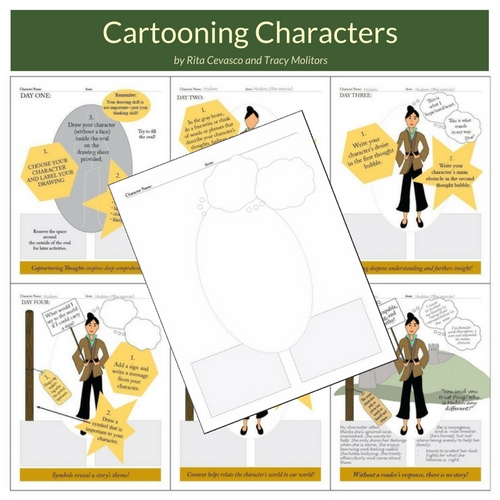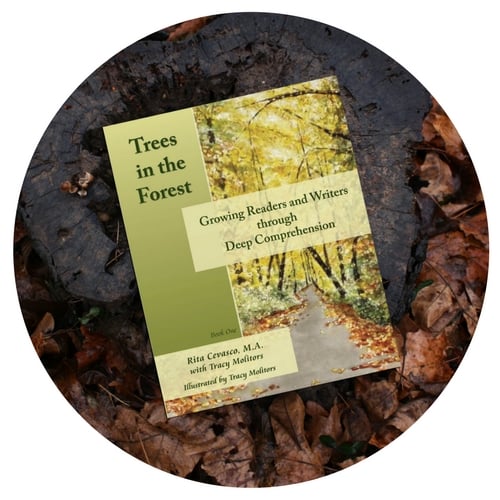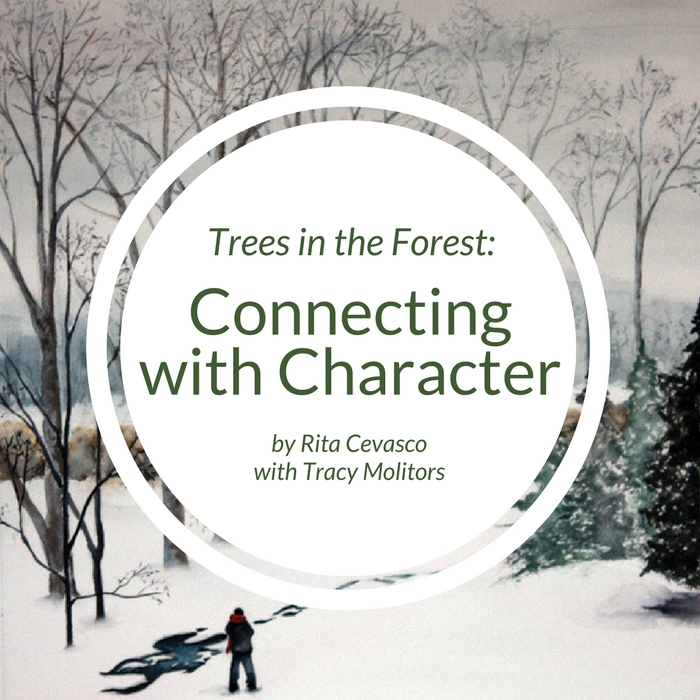
by Rita Cevasco and Tracy Molitors
Day One: Laying a Path
Day Two: Bits & Pieces I
Day Three: Bits & Pieces II
Day Four: Story Symbols
“You have helped ease my mind . . . Seeing you demonstrate that there are choices to be made in every passage is liberating. I see more clearly that we are laying a path. What that means is this: it’s a process!” —Tara, Homeschool Parent
Connecting with Characters is one of the chapters in our book, Trees in the Forest: Growing Readers and Writers through Deep Comprehension.
Cartooning Characters is a strategy we explore in order to enrich understanding in a story. We readers are more likely to relate to a story’s theme when we relate to the story’s character. Cartooning is one step in Laying a Path to deeper comprehension.
In interpreting our character’s conflict and the stories themes, we begin to relate the story’s ideas to both the broader issues of the world and the narrower issues of our own lives. This is the definition of connecting with text and active reading: the ability to understand the writer’s themes, analyze how and why ideas are revealed, and to relate those ideas to our own lives and to all of humanity. Connecting with text is a tall order; all of us—children and adults—grow in these skills throughout our reading lives.
Helping readers develop a habit of making connections and analyzing text can happen at any age, especially when we capture and record our thoughts while reading. In our book we use the practice of copywork to help us capture and record our thoughts. We teach strategies to intentionally turn a story’s passage into a language arts study, taking a small bit of learning (a tree) and using it to gain understanding of literature (a forest). We call this in-depth study of copywork (the equivalent of studying a tree) Intentional Copywork.
Intentional Copywork must begin with comprehension—after all, understanding is a necessary first step in deep learning. I discovered in my Foundations class through Brave Writer that many families weren’t using the practice of copywork and dictation to its fullest, and therefore, either giving up or missing opportunities. Sometimes families assigned copywork, but didn’t realize their kids weren’t reading and understanding the chosen passage. Thus, part one in our Trees in the Forest Series gives various ideas for one aspect of language arts—comprehension—that can be used within a week of Intentional Copywork. Like our Cartooning Characters activity, we provide strategies that can be used again and again—all containing Bits and Pieces of writing.
Today we will add context to our cartoon. One way we add context is by engaging in copywork. We will add a quote from the story that seems to fit our cartoon. It might be a favorite quote, an oft repeated character line, or just something that tickles our fancy. The quote might illustrate the symbol or the theme. The quote might illustrate the conflict. It is the artist’s choice! But since the writing is going onto our week-long project, let’s write as neatly as we can. If you have a young or struggling writer, be sure to add lines for guidance.
Voila! We just gave our children a great reason to be neat in their copywork.
Lastly, we will add context to our story by drawing in the setting. Every story is told in its own little world. But story worlds are designed to help the reader relate the conflict and themes to two other worlds: the larger human world and the smaller world of our own lives. We use another activity in our book to help children make this connection, but Cartooning Characters is a great start.
If you haven’t already, download the free PDF to see how we encourage children to think about their character’s world, adding context through setting and quotations. We will add context to our drawing sheet that now contains all five days’ worth of activities. There is an example for your reference.
Over these five days, we have
- explored a favorite character,
- added our own thoughts with Bits and Pieces of writing,
- identified conflicts,
- discovered symbols and themes,
- and added both the story’s content (quotes) and context (setting).
We began with a simple drawing, and ended with a complex character sketch! We gained insight and added our thoughts to the story. As we say in our book—without a reader’s response, there is no story.
Download our PDF, or continue with Day Five . . .
DOWNLOAD Cartooning Characters
Trees in the Forest: Growing Readers and Writers through Deep Comprehension
by Rita Cevasco with Tracy Molitors
Think deeply to write deeply. . . Geared to parents, educators and Speech Language Pathologists, this creative resource can be used to aid children in becoming lifelong readers and writers. Available in PDF or PRINT formats.
For the digital PDF version:
Take $5.00 off at check out!
Enter Discount Code: RITA5
(expires January 31, 2017)
[This post contains an Amazon affiliate link. When you click on the link to make a purchase,
Brave Writer receives compensation at no extra cost to you. Thank you!]


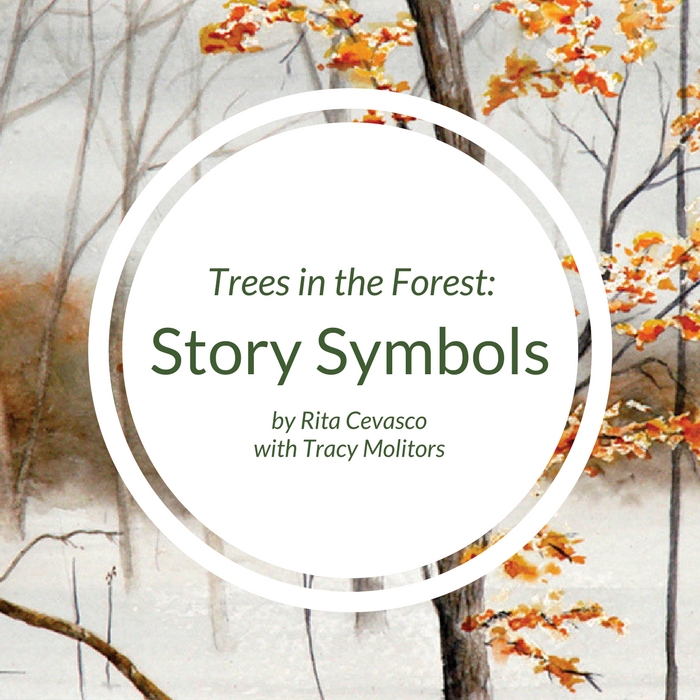
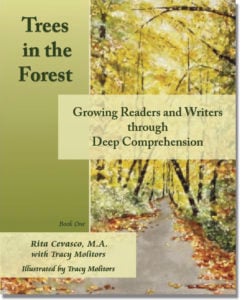
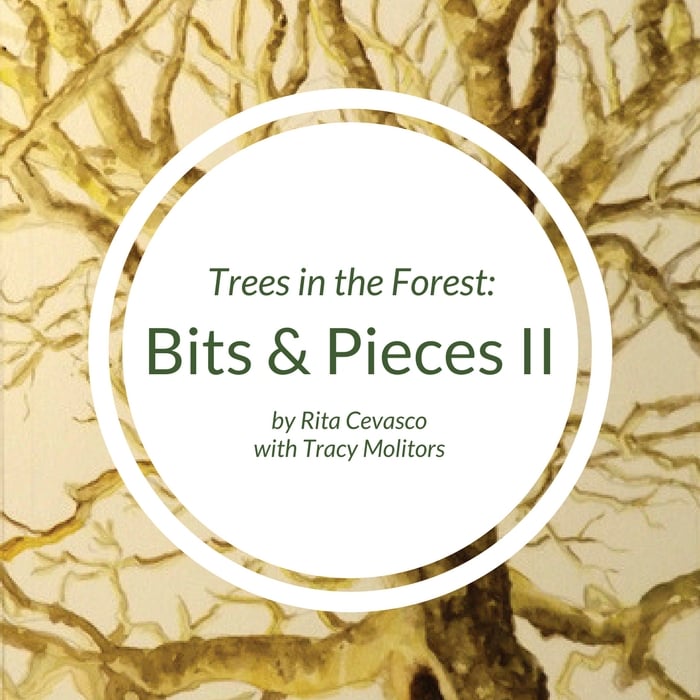

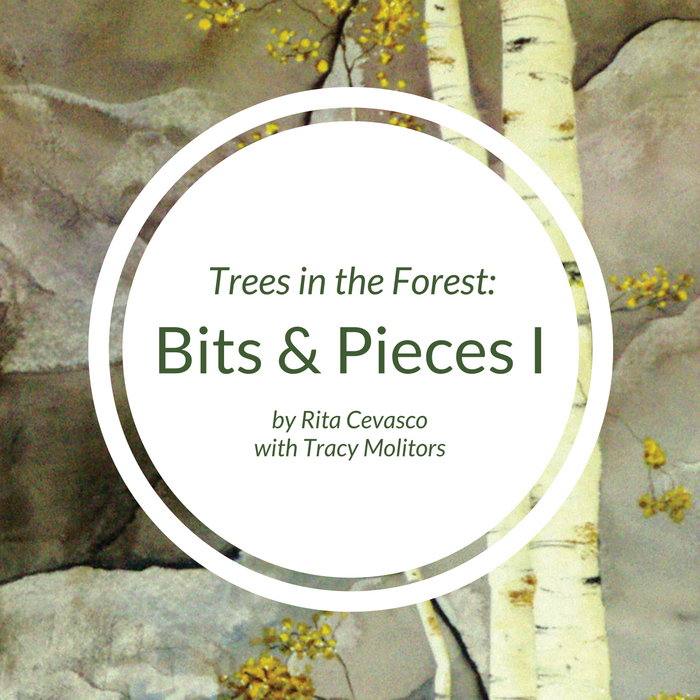
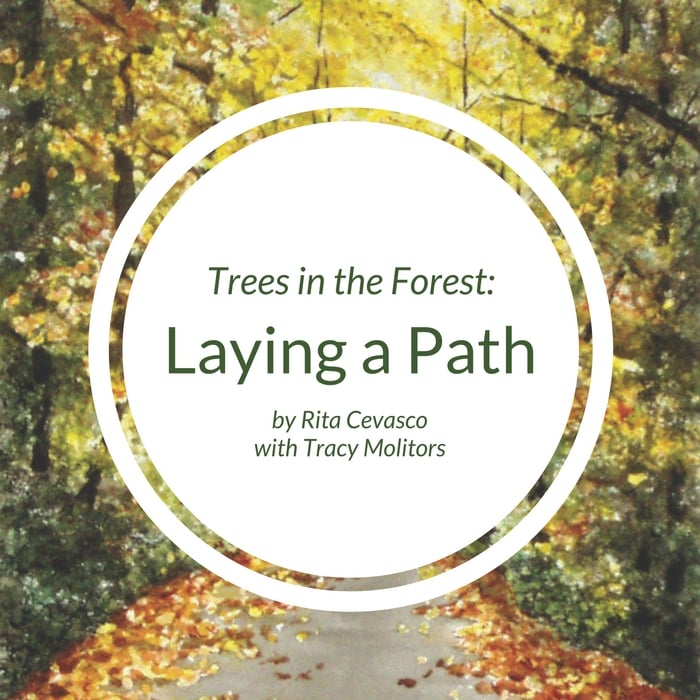
 Laying a Path. Remember those words. Everyday your children walk on a path as developing readers and writers. For some it is a pleasant, easy walk. For others, it is uneven ground. For still others, it is a steep and daunting climb—overwhelming and exhausting.
Laying a Path. Remember those words. Everyday your children walk on a path as developing readers and writers. For some it is a pleasant, easy walk. For others, it is uneven ground. For still others, it is a steep and daunting climb—overwhelming and exhausting.